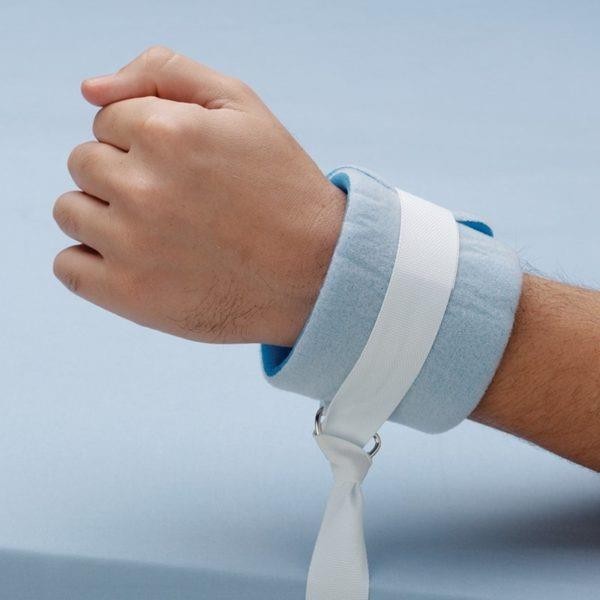During an evening shift on a medical unit, the only nurse on the unit is busy with an unstable client. The unit clerk, who is also both a certified medication aide and an unlicensed assistive personnel (UAP), reports to the nurse that a healthcare provider is on the telephone and wishes to prescribe an as needed (PRN) dose of an oral over-the-counter laxative for a client who is constipated. Which instruction should the nurse provide the unit clerk?
Remain with this client and monitor the vital signs while the nurse takes the call.
Ask the healthcare provider to remain on "hold" until the nurse can confirm the prescription.
Be sure to write down what is prescribed and then repeat it back to the healthcare provider.
Tell the healthcare provider the nurse will return the phone call as soon as possible.
The Correct Answer is D
Choice A Reason: Remaining with this client and monitoring the vital signs while the nurse takes the call is not an appropriate instruction for the unit clerk. The unit clerk is not qualified to monitor vital signs or provide direct care to clients. The nurse should delegate this task to another licensed nurse or UAP who has been trained and validated in this skill.
Choice B Reason: Asking the healthcare provider to remain on "hold" until the nurse can confirm the prescription is not an appropriate instruction for the unit clerk. The unit clerk is not authorized to take verbal or telephone orders from healthcare providers. Only licensed nurses or pharmacists can do so, following specific policies and procedures.
Choice C Reason: Writing down what is prescribed and then repeating it back to the healthcare provider is not an appropriate instruction for the unit clerk. The unit clerk is not authorized to take verbal or telephone orders from healthcare providers. Only licensed nurses or pharmacists can do so, following specific policies and procedures.
Choice D Reason: Telling the healthcare provider the nurse will return the phone call as soon as possible is an appropriate instruction for the unit clerk. The unit clerk can relay messages between the healthcare provider and the nurse, but cannot take orders or give information about clients. The nurse should prioritize calling back the healthcare provider after stabilizing the unstable client.
Nursing Test Bank
Naxlex Comprehensive Predictor Exams
Related Questions
Correct Answer is C
Explanation
Choice A Reason: Cautioning the nurse that one more tardiness will result in probational employment is not the best approach because it is too punitive and does not address the underlying cause of the tardiness. The nurse manager should first try to understand why the nurse is late and offer support or guidance if needed.
Choice B Reason: Offering to switch the nurse's shift assignments to afternoons or evenings is not the best approach because it may not solve the problem of tardiness and may create resentment among other staff members who have to adjust their schedules. The nurse manager should respect the nurse's preferences and availability but also hold the nurse accountable for fulfilling their responsibilities.
Choice C Reason: This is the best approach because it communicates clearly and respectfully what is expected of the nurse and why it is important for them to be punctual. The nurse manager should also provide feedback and recognition when the nurse improves their attendance.
Choice D reason: Having the nurse sign a copy of the hospital employee attendance policy is not the best approach because it may imply that the nurse is unaware or indifferent to the policy. The nurse manager should assume that the nurse knows and agrees with the policy, but may need some assistance or motivation to follow it.
Correct Answer is B
Explanation
Choice A Reason: Contacting the healthcare provider is not the priority action because restraints should only be used as a last resort and not for staff convenience. The nurse manager should first ensure that the client's safety and dignity are respected.
Choice B Reason: This is the correct answer because restraints are not indicated for this situation and violate the client's rights. The nurse manager should educate the staff nurse about the ethical and legal implications of using restraints without proper justification and documentation.
Choice C Reason: Closing the door to the room is not a priority action because it does not address the issue of restraints. It also may isolate the client and increase her anxiety and distress.
Choice D Reason: Determining if the client has a PRN prescription for an antianxiety agent is not a priority action because it does not address the issue of restraints. It also may not be appropriate to medicate the client without assessing her condition and obtaining her consent.

Whether you are a student looking to ace your exams or a practicing nurse seeking to enhance your expertise , our nursing education contents will empower you with the confidence and competence to make a difference in the lives of patients and become a respected leader in the healthcare field.
Visit Naxlex, invest in your future and unlock endless possibilities with our unparalleled nursing education contents today
Report Wrong Answer on the Current Question
Do you disagree with the answer? If yes, what is your expected answer? Explain.
Kindly be descriptive with the issue you are facing.
